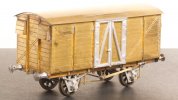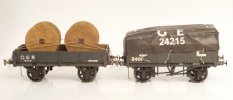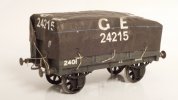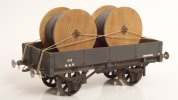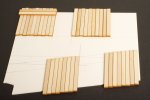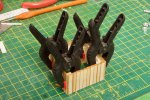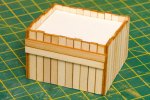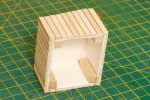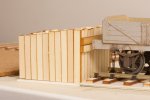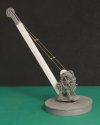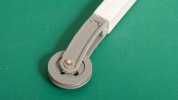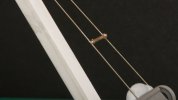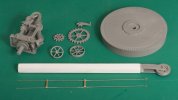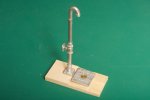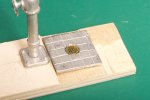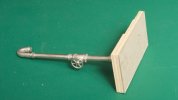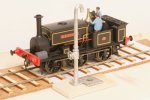We discussed spiked track earlier; these two posts mark the start and the end of the posts.
I now have a copy of Peter Paye's book, "The Mid-Suffolk Light Railway" (Wild Swan 1986, reprinted 2003) and this work contains many photographs of the original track at the Middy. Now, I know that these photographs were not taken to record the way all of this track was laid; nor were they taken for the railway modeller. But they do repeatedly show one spike not two on each side of the rails, and rail joints on top of sleepers.
The
photograph of Mendlesham Station posted by
@Rob R is annoyingly clearer than many photos in Paye's book, but I am still wanting to think, the use of a second spike seen here was done to reinforce things or to realign them, and not as a routine practice. The additional spikes seem to be dotted around without any clear pattern.
The Middy was laid with 56 lb/yard rail and I am using code 100 rail which can represent 60 to 70 lb rail. I could claim my rail represents 56 lb/yard rail and this was a (fictional) precursor to the standard adopted by the Middy; but it is easier to leave this one open for now. After all, the Heybridge Railway does see a GER Y14, which would want a heavier rail to reduce the likelihood of breakages.
The photographs in Paye's book suggest a spacing of about 20 inches between sleepers; a sleeper is 10 inches wide so the pitch would be 30 inches. This is the spacing I chose for my example track on "Heybridge Basin", because I thought it looked about right.
So . . . I can go for one spike on each side of the rail on each sleeper for the Heybridge Railway. The Board of Trade may well have been unhappy about this, but if so it is easier to write a fictional letter from them to the railway than to double my workload for building the track. The sleeper pitch can stay at 17 to 18 mm (30 inches), and the rail will be code 100.
Or, to put things more succinctly, "my railway my rules"!
I am happier to firm up on things like this because I now know what I need to do for rest of the track. The only big unknown remaining is what the pointwork should look like, and I don't need to know this until after I build the fiddle yard, complete the Heybridge Basin project, and start thinking about a layout for Heybridge itself.



